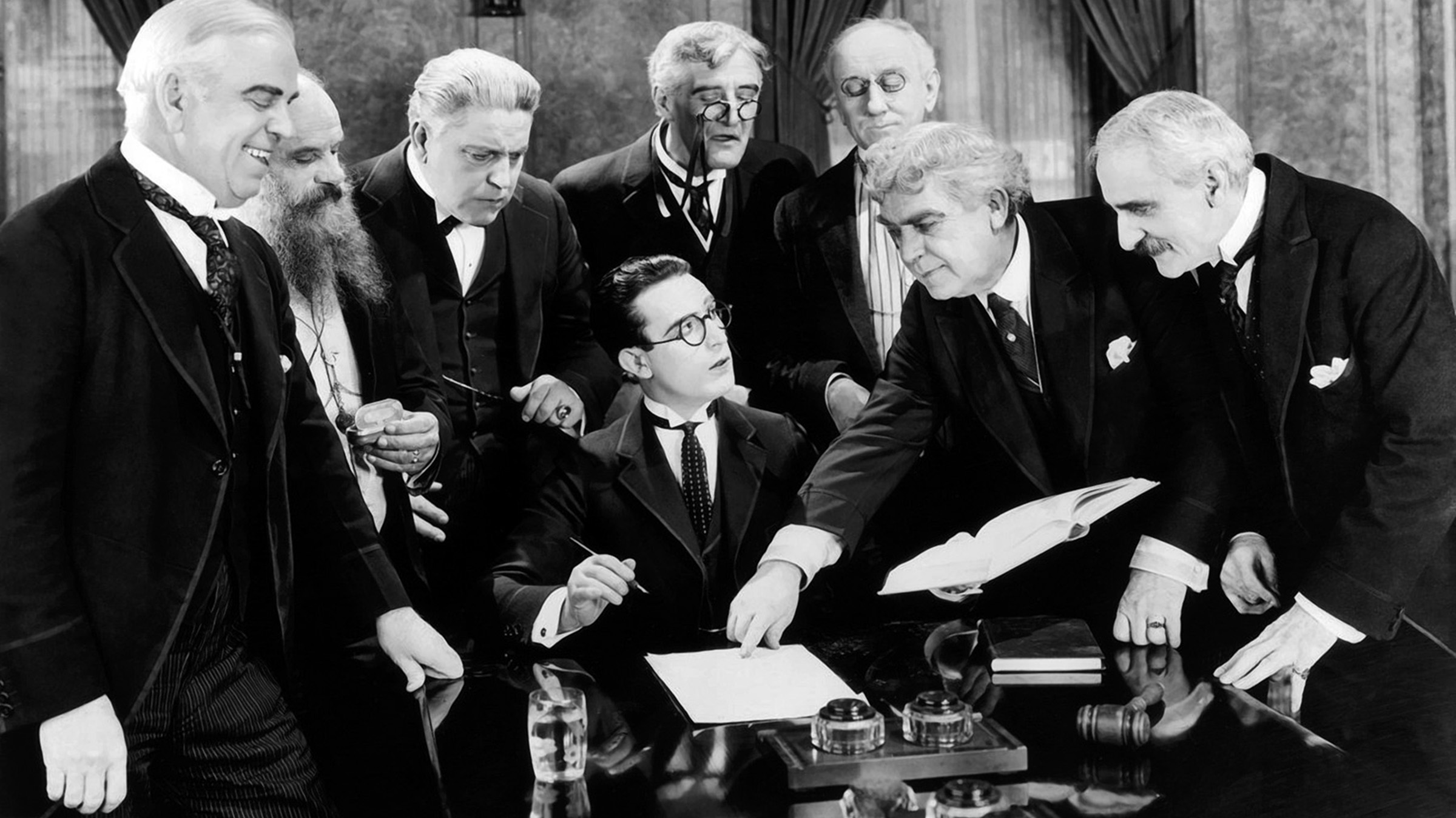Generally considered to be one of the greatest comedians of the silent era and certainly one of its biggest box-office draws, Harold Lloyd was also one of the most prolific. He appeared in more than 165 shorts between 1915 and 1921, and, from 1921 to 1928, he produced and starred in eleven feature-length comedies, making an additional seven features after the advent of sound.
When Lloyd was a child, his mother instilled him with a passion for theater, which became his steadying influence as his family kept up a wandering existence and then crumbled in divorce. Harold eventually chose to live with his father, “Foxy” Lloyd, who was collecting enough workers compensation to move them to San Diego and to let Harold study acting.
When the Edison Company came to California in late 1912, Lloyd landed his first role as an extra in the film The Old Monk’s Tale, playing the part of a Yaqui Indian. Following this, he worked sporadically as an extra for Edison, Keystone, and Universal. Lloyd soon figured out he could sneak onto studio lots if he put on makeup and walked in with the rest of the actors returning from lunch. Once inside, Lloyd made friends, learned the craft of moviemaking, and hounded directors for parts. He also met fellow extra Hal Roach, who was soon to become his employer and collaborator.
When Roach began producing films, he immediately hired Lloyd as his principal talent. In just three years, Lloyd made more than 70 films, using two characters that were variants on Charlie Chaplin’s Tramp, one named Willie Work and the other Lonesome Luke. He was unsatisfied with these derivatives, however, and, as early as 1916, had the idea for the now immortal “Glasses Character.” Lloyd was not allowed to use the new persona until 1917 and then only when he threatened Roach with a walkout. “This role,” as Annette M. D’Agostino, founder of the fan club Harold Everyman Lloyd Lives On (H.E.L.L.O.) writes, “which put a normal-looking boy onto the screen, with the single defining characteristic being a pair of lens-less horn-rimmed glasses, came to change the standard of comedy at the time. No more did a character have to be quirky, grotesque, or out-of-the-ordinary in order to be funny.” The character was a hit from the start and soon Lloyd was making longer comedies at a better salary.
In 1919, chance struck Lloyd with a blow that would have finished other careers. While being photographed for publicity stills, Lloyd was handed a prop bomb. He planned to strike a rakish pose while lighting a cigarette from the burning fuse. There was much smoke, and Lloyd wanted to retake the shot. While waiting to exchange the bomb with a new, long-fused one, the prop exploded, blinding Lloyd temporarily and severing the thumb and forefinger of his right hand. Lloyd recuperated quickly and never in his life spoke publicly of the incident. He did not want his audience to come to his films out of pity or sensationalism and worked with a prosthesis designed for him by ex-glover Sam Goldwyn.
Doctor Jack was the first Lloyd film to be conceived of as feature length. The earlier A Sailor-made Man (1921) and Grandma’s Boy (1922) were released as features, too, but were really shorts with “extra” footage deemed too good to cut. At a production cost of $113,440, Doctor Jack grossed $1,275,423 and became the sixth highest grossing film of 1922. Christian Scientists flocked to the film, approving of the theme of healing the body through the mind. Though not a Christian Scientist himself, Lloyd was quoted as saying in 1928: “I feel that to be a comic is as vital and important a mission as being a physician, healing other wounds.”
Lloyd’s life was, in many ways, a success fable. He married his leading lady Mildred Davis only months after Doctor Jack was released; they had three children. The family lived at their fabulous 16-acre estate called Greenacres (now a National Historic Landmark), where there was ample room for Lloyd’s many hobbies (including stereoscopic photography, record collecting, and a permanent Christmas tree). In 1924, Lloyd and his father joined the Shriners and, in 1949, he was made that organization’s Imperial Potentate. He donated to and campaigned tirelessly for many charities, especially the Hospital for Crippled Children. In the mid-’60s, he cut his films into montages of humorous bits and skits and toured the country with them, introducing a new generation to his work and the concept of silent film.
Melissa Chittick and Stephen Salmons are the founders of the San Francisco Silent Film Festival.
Presented at SFSFF 1997 with live music by Dennis James on the Mighty Wurlitzer

